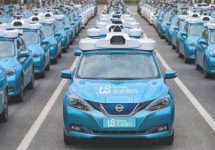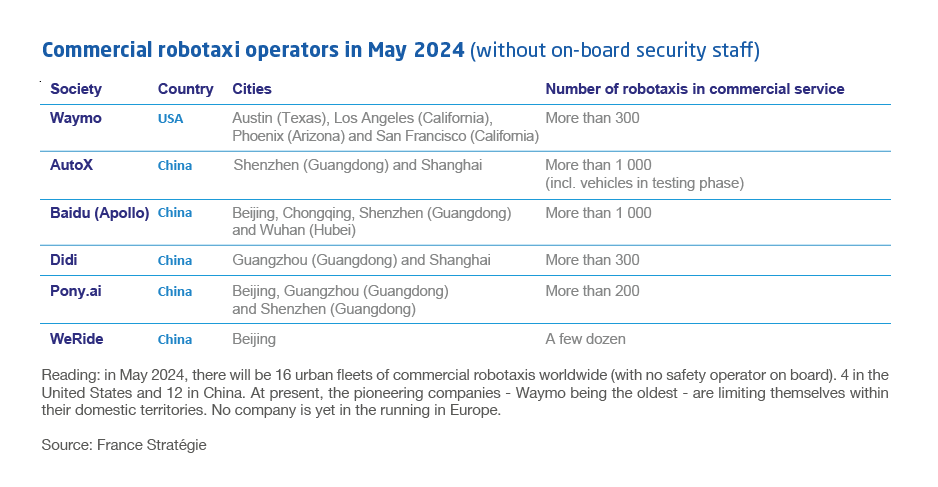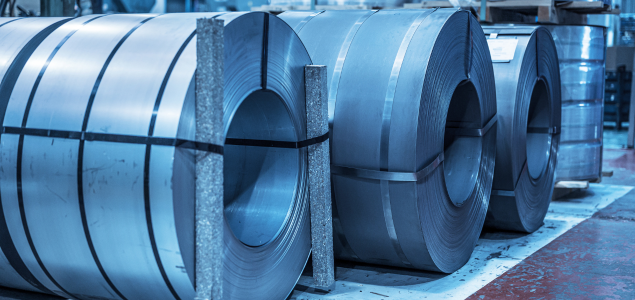
In the eyes of investors and public authorities the benefits of robotaxis would be massive: mobility would be inclusive, accessible to the elderly, disabled or those without a driving licence; road safety would be improved; transport costs would be reduced and users would earn back their driving time. This would open the door to a clear reduction in the number of vehicles owned by private individuals. As long as the increase in traffic demand is kept under control, the deployment of robotaxis would be beneficial in economic, social and environmental terms.
China is convinced of this. It has adopted an ambitious strategy, based on the key assets of the size of its market and the strength of its industrial ecosystem. By September 2023, 15,000 kilometres of roads and streets were open to trials of automated vehicles, which had already covered 70 million kilometres in ten years. Even better, in 2024, robot taxis and autonomous shuttles were in commercial operation in six Chinese cities, compared with four in the United States, the only competitor. Barring any major accidents, expansion is set to be rapid.
Europe and France are clearly lagging behind in this area, having concentrated their efforts on autonomous shuttles and buses. This gap can only be closed by creating a complete ecosystem, which requires public and above all private funding. Industrial cooperation between European countries will be necessary, but probably also with China and the United States - otherwise there is a risk of a commercial offensive by these two countries. Regulation can act as a temporary barrier to entry, but at the risk of holding back European companies too. A balance must be struck between road safety and the creation of an environment conducive to the testing and deployment of autonomous vehicles.

Read the full document in french






